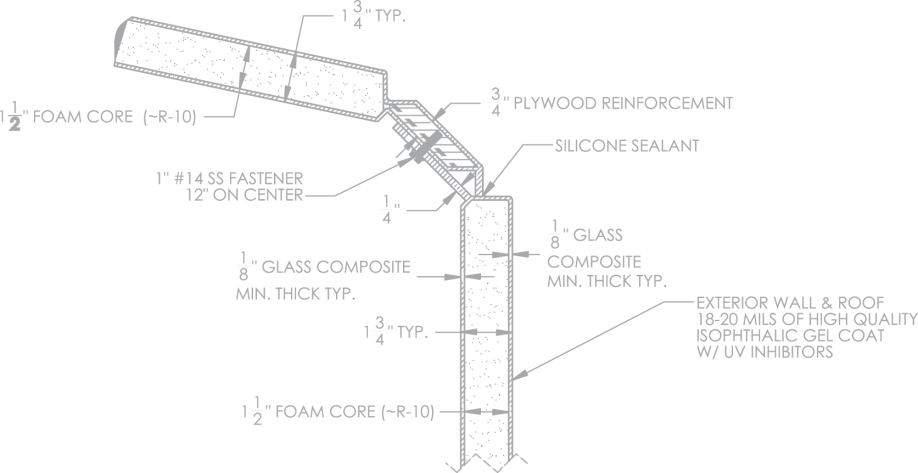Exactly How Composites are Transforming the Landscape of Building Products
Exactly How Composites are Transforming the Landscape of Building Products
Blog Article
From Waste to Marvel: How Recycled Compounds Are Reinventing Various Applications
As industries worldwide are progressively focusing on sustainability and ecological obligation, the use of recycled compounds has actually become a transformative service throughout numerous sectors. From improving the efficiency of auto components to providing sustainable options in building and construction products, the applications of recycled compounds are promising and large. By repurposing waste products right into ingenious composite frameworks, suppliers are not just lowering their ecological impact yet also opening a world of opportunities for developing durable, efficient, and green items. The effects of this change in the direction of reused compounds are profound, advertising a brand-new age of sustainable methods and technological innovations that are improving markets in unanticipated methods (composites).
The Increase of Recycled Composites
The increasing fostering of recycled composites in various sectors shows a growing acknowledgment of their ecological and financial advantages. Recycled composites, originated from products such as redeemed carbon fiber or recycled plastics, use a lasting choice to typical products without compromising on efficiency. Industries ranging from automotive and construction to aerospace and customer items are significantly turning to recycled compounds to satisfy their manufacturing requirements.
One trick motorist behind the surge of recycled compounds is the push in the direction of sustainability and eco-friendliness. Companies are under increasing stress to decrease their carbon footprint and minimize waste generation. Recycled composites give a solution by making use of products that would certainly otherwise wind up in garbage dumps, consequently promoting a round economic situation.
Additionally, the financial benefits of using recycled compounds can not be neglected. These materials are commonly more cost-efficient than their virgin counterparts, offering firms a means to reduce manufacturing expenses without sacrificing quality. As advancements in recycling innovations remain to boost, the adoption of recycled composites is expected to more rise across varied sectors.
Benefits in Automotive Sector

Sustainable Solutions in Construction
Integrating lasting practices in building projects is vital for lessening ecological influence and advertising lasting stability in the constructed setting. With the building and construction sector being just one of the biggest factors to carbon discharges and waste generation internationally, the fostering of lasting options is vital in alleviating these unfavorable impacts. Recycled composites are playing a considerable role in revolutionizing construction practices by offering an extra environmentally friendly option to conventional building products.
Recycled compounds, obtained from materials such as redeemed plastic, wood, and rubber, provide a lasting choice for different construction applications. These products not just assist in decreasing waste but additionally provide sturdiness, stamina, and convenience equivalent to standard building and construction materials. By including recycled compounds right into structure layouts, construction projects can contribute to resource preservation and power performance while maintaining high performance criteria.
Additionally, making use of recycled composites in building and construction aligns with the expanding need for eco-friendly Full Article structures and sustainable facilities. As ecological policies end up being more stringent and the focus on sustainability escalates, the construction market is significantly turning to recycled composites as a viable service for developing eco-conscious structures and structures.
Eco-Friendly Innovations in Packaging
Naturally degradable products such as mushroom product packaging, seaweed-based movies, and compostable plastics use encouraging options to the plastic pollution situation. These ingenious materials not just decay normally, decreasing environmental influence, however also provide equivalent performance and sturdiness to conventional product packaging choices.
In addition, the integration of recycled products right into packaging manufacturing procedures even more improves sustainability initiatives. By incorporating post-consumer recycled material, firms can reduce the demand for virgin products, preserve all-natural resources, and advertise a round economy in the packaging market.
Changing Textiles With Recycled Composites
In the world of sustainable materials, the focus currently changes towards transforming fabrics with the cutting-edge use recycled composites. This development in fabric manufacturing is driven by the pushing need for more green practices in the fashion and fabric sectors. Recycled composites use a promising option by combining materials like plastics, carbon fiber, and glass fiber to create long lasting and versatile textiles.
Among the essential benefits of using recycled composites in fabrics is the ability to repurpose waste materials that would certainly otherwise wind up in landfills. By integrating recycled elements into textiles, manufacturers can minimize their ecological impact and add to a more round economic situation - composites. Additionally, fabrics made from recycled compounds often display boosted toughness, efficiency, and toughness qualities, making them suitable for a large range of applications
As consumer demand for sustainable items proceeds to climb, the fostering of Our site recycled compounds in fabrics is positioned to expand considerably. This shift towards more eco-friendly textile production not just profits the world yet likewise opens up brand-new chances for innovation and creativity in the fashion and textile industries.
Verdict

From enhancing the efficiency of automobile components to supplying sustainable options in construction materials, the applications of recycled composites are substantial and promising. Recycled composites, acquired from materials such as redeemed carbon fiber or recycled plastics, offer a lasting alternative to traditional materials without endangering on performance. Furthermore, the usage of recycled composites promotes the round economy by diverting waste from land fills and reducing the requirement for virgin raw products - site composites.Recycled compounds, derived from materials such as recovered plastic, wood, and rubber, give a sustainable choice for numerous construction applications.In the realm of sustainable materials, the emphasis currently shifts towards changing fabrics with the innovative use of recycled composites
Report this page